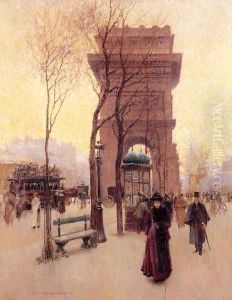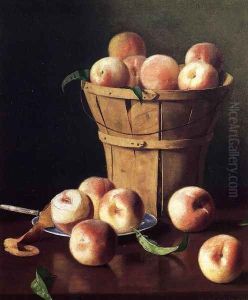Thomas Cromwel Corner Paintings
Thomas Cromwell Corner was an American artist born in Baltimore, Maryland, in 1865. His artistic journey began at a young age, influenced by the rich cultural environment of Baltimore, a city known for its vibrant art scene in the late 19th and early 20th centuries. Corner's initial interest in art was nurtured through his education and early exposure to the works of both American and European artists. He pursued formal art education, which was a crucial step in honing his skills and developing his unique style. Although specific details about his educational background are not widely documented, it is known that like many artists of his time, Corner likely engaged in studying the works of masters, both past and contemporary, and may have attended art schools that were part of the era's burgeoning art education movement.
Throughout his career, Thomas Cromwell Corner became known for his landscapes, portraits, and still-life paintings. His work often reflected the influence of the Impressionist movement, which was gaining popularity in the United States during his formative years as an artist. Corner's adoption of Impressionist techniques can be seen in his use of light and color, which he employed to capture the transient effects of light on the subjects of his paintings. This aspect of his work placed him among the American artists who embraced and contributed to the Impressionism movement's spread in the United States, an influence that was becoming increasingly significant in the early 20th century.
Corner was an active member of the art community in Baltimore and beyond. He exhibited his work in various venues, contributing to the vibrant art scene of his hometown and participating in the broader dialogue of American art during his time. His contributions were recognized by his peers and by art institutions, and his works were included in exhibitions and collections across the country.
The legacy of Thomas Cromwell Corner is preserved through his art, which continues to be appreciated for its beauty and historical value. His paintings are held in private collections and public institutions, serving as a testament to his skill and his role in the development of American art in the late 19th and early 20th centuries. Thomas Cromwell Corner passed away in 1938, leaving behind a body of work that continues to inspire and captivate art enthusiasts and historians alike.

